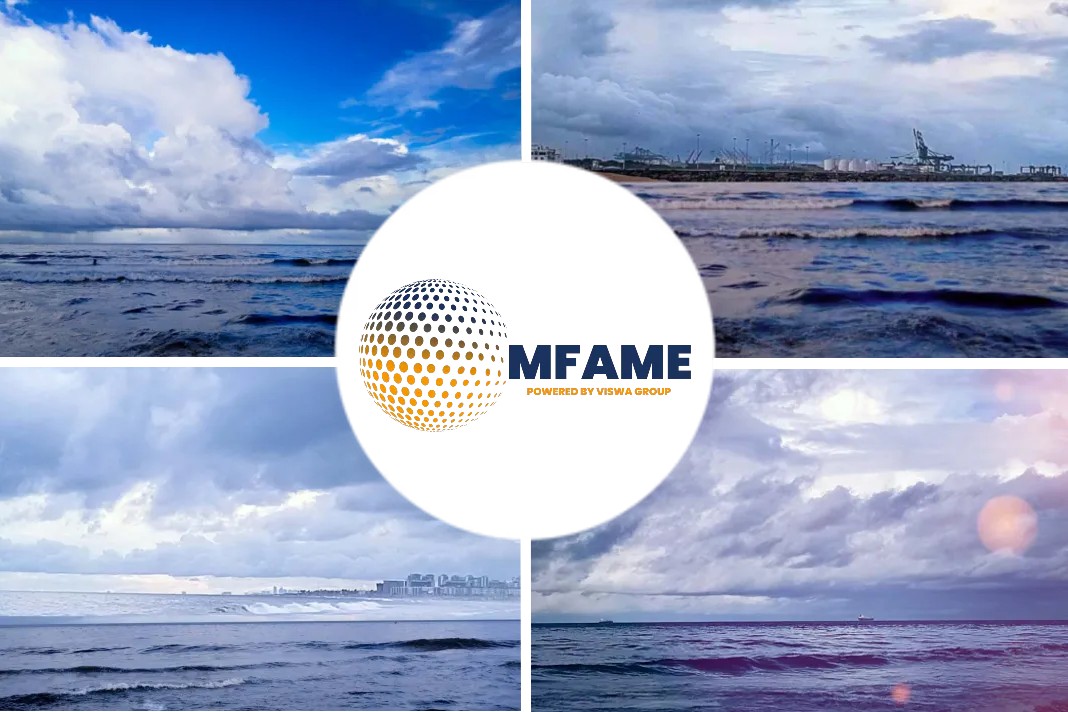 Environmental monitoring group SkyTruth has exposed how common it is for ships to pump their waste oil out in Indonesian waters, says an article published in Eco Business.
Environmental monitoring group SkyTruth has exposed how common it is for ships to pump their waste oil out in Indonesian waters, says an article published in Eco Business.
What happened?
Two ships have been spotted allegedly dumping waste oil in the sea off the eastern coast of Sumatra.
Activists say is poor enforcement against marine pollution violations in Indonesia.
The involved vessels
One of the vessels has been identified in a report by the environmental monitoring group SkyTruth as the Perkasa, a cement carrier operated by Jakarta-based shipping company PT Indobaruna Bulk Transport.
SkyTruth’s report showed it was trailing a slick of oil some 18 kilometres (11 miles) long northbound in the Malacca Strait as of Feb. 15.
In a separate report, SkyTruth also reported possible bilge dumping on Jan. 8 near the northern tip of Indonesia’s Bangka-Belitung islands, located to the south of the Malacca Strait.
It identified the Indonesian crude oil tanker Gamsunoro as the source of the slick, which stretched at least 117 kilometres (73 miles) when the researchers captured the image.
The report didn’t name the operator of the tanker, which at the time was anchored near the town of Indramayu on the northern coast of the island of Java.
Malacca Strait regularly monitored
The researchers said they regularly monitored the Malacca Strait, a narrow waterway between Sumatra and the Malay Peninsula. This is one of the world’s busiest shipping lanes, which connects the Pacific and Indian oceans.
“Due to the Strait’s high density of marine traffic of all types, oil spills — accidental and intentional — are likely to occur,” the latest report said.
Satellite images support suspicions
The researchers said they suspected the Perkasa was dumping its bilge, a typically intentional discharge of oily waste from ships to reduce ballast water or free up space in the cargo hold.
To support their suspicions, they combined satellite images that detect slicks with vessel information broadcast via the radio-frequency automatic identification system, or AIS.
“The ship’s predicted location closely matches the vessel’s position in the [satellite] image, and no other vessels broadcasting AIS were likely candidates for a match,” the researchers said in the report.
“This leads us to infer that Perkasa is the vessel seen apparently discharging oily bilge waste in the satellite image.”
Possibility of fuel oil leak, not denied
The researchers also acknowledged the possibility of an accidental leak of fuel oil or other oily substances.
“The best we can say is, based on our cumulative decades of experience analysing thousands of satellite images for oil pollution, there is clearly a slick of oil or an oily substance emanating from a vessel that is visible on the satellite image,” John Amos, the SkyTruth founder, told Mongabay in an email.
Vessel operators comment awaited
SkyTruth has called for the vessel operator to explain the slick observed in the images.
The Perkasa is registered with two classification societies: Biro Klasifikasi Indonesia and Nippon Kaiji Kyokai (ClassNK), both of which are supposed to monitor and regulate maritime safety and pollution prevention.
Mongabay contacted both organisations as well the ship’s operator for comment, but only ClassNK replied.
ClassNK’s reply
It confirmed that the Perkasa was registered with Tokyo-based ClassNK, but declined to answer questions regarding the allegation of bilge dumping.
The SkyTruth report notes that ClassNK requires registered vessels to pass environmental performance for their operations in five areas, including water and waste.
Ballast water, sewage or black water, garbage, sludge oils, and bilge water are covered under this category.
Perkasa’s operator said it placed a “high priority in safety by adhering to policies, practices, and procedures” to ensure the safety of the environment.
Routine bilge dumping spots identified
Amos said SkyTruth had identified several hotspots around the world where apparent bilge dumping was a routine occurrence, and the eastern approach to the Malacca Strait was one such hotspot.
In Indonesia, bilge dumping is commonly practiced and highlights the poor monitoring by port, marine security, and law enforcement officials, said Arifsyah Nasution, oceans campaigner at Greenpeace Indonesia.
Report based investigation could solve the issue
Ahmad Baihaki, program manager at Global Fishing Watch-Indonesia, said the problem was particularly bad in the Bangka-Belitung islands, affecting both local beach resorts and the livelihoods of coastal communities.
Arifsyah called on the government to launch an investigation based on the SkyTruth report to reveal the scale of the problem in the country and resolve it.
“We know the government has quick access to information when there’s been an allegation of pollution, whether it’s a tip from local people or based on satellite technology,” he said. “But the response is still slow.”
What could be done?
“Improving vessel monitoring and checking at ports and sea is a great effort for prevention and law enforcement against bilge dumping in Indonesian waters,” Arifsyah added.
Eelco Leemans, an adviser at the Clean Arctic Alliance, told Mongabay that the practice of dumping oily water in the open sea was illegal worldwide, as regulated by the International Convention for the Prevention of Pollution from Ships, or Marpol.
“Oily water can only be pumped overboard if it is pumped through an oily-water separator,” Leemans said.
Amend international treaty
But SkyTruth’s Amos said enforcement of this convention was “notoriously weak.” One solution, he said, could be to amend an existing international treaty on illegal fishing to also cover bilge dumping.
“In general, it is the responsibility of the flag state to enforce the law and impose penalties,” he said. “But it will take an organised international effort to successfully address this problem.”
Did you subscribe to our daily newsletter?
It’s Free! Click here to Subscribe!
Source: Eco Business




















